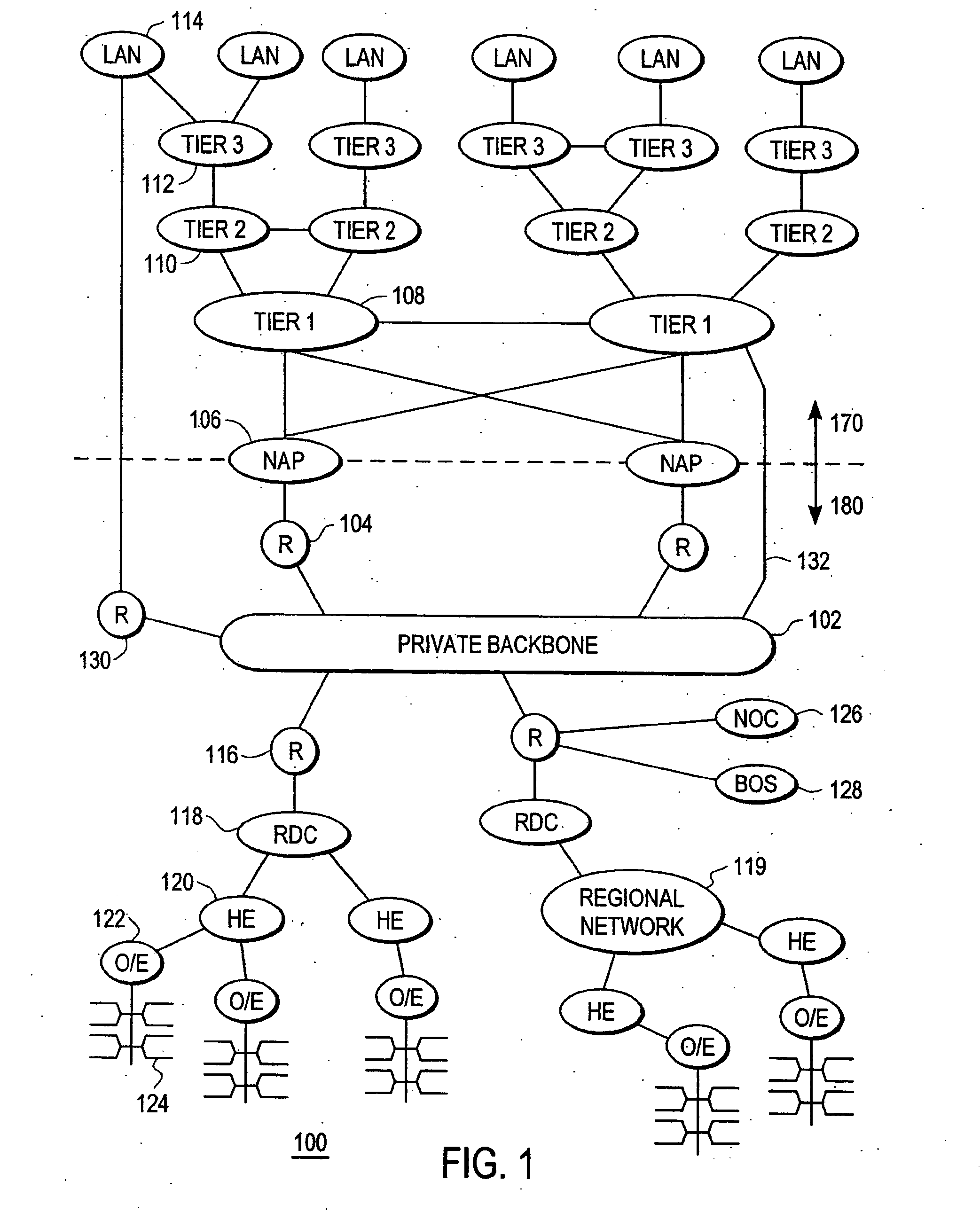Delivering multimedia services
a multimedia service and end-to-end technology, applied in the field of high-performance end-to-end delivery of online multimedia services, can solve the problems of high-speed connection not being able to deliver high-performance online services, unreliable performance, and high-redundancy data traffic, so as to improve bandwidth to the internet, improve speed, and improve the effect of high-speed connection
- Summary
- Abstract
- Description
- Claims
- Application Information
AI Technical Summary
Benefits of technology
Problems solved by technology
Method used
Image
Examples
Embodiment Construction
[0030] The preferred embodiments of the present invention are now described with reference to the figures.
[0031]FIG. 1 is a diagram of a scalable, hierarchical, distributed network architecture for delivering high-performance online multimedia services constructed according to a preferred embodiment of this invention. In the architecture of the present invention, the distributed public Internet (top portion) 170 is separated from a hierarchical private network (bottom portion) 180 under private control.
[0032] A high-speed, private backbone 102 is connected via routers (R) 104 to network access points (NAPs) 106 of the Internet. In a preferred embodiment of the present invention, the private backbone 102 runs asynchronous transfer mode (ATM) service over bandwidth leased from commercial providers such as MCI Communications, AT&T, or Sprint. ATM is a high-speed, cell-based service which allows different types of traffic to be supported at different levels of service. The routers 104...
PUM
 Login to View More
Login to View More Abstract
Description
Claims
Application Information
 Login to View More
Login to View More - R&D
- Intellectual Property
- Life Sciences
- Materials
- Tech Scout
- Unparalleled Data Quality
- Higher Quality Content
- 60% Fewer Hallucinations
Browse by: Latest US Patents, China's latest patents, Technical Efficacy Thesaurus, Application Domain, Technology Topic, Popular Technical Reports.
© 2025 PatSnap. All rights reserved.Legal|Privacy policy|Modern Slavery Act Transparency Statement|Sitemap|About US| Contact US: help@patsnap.com



